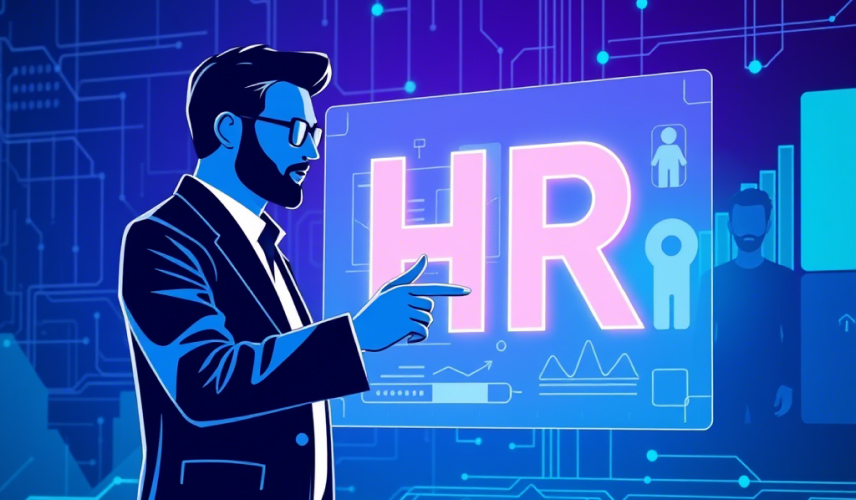AI-боты для бизнеса: виды, функционал, польза
ИИ-чат-боты способны распознавать смысл текстовых и голосовых обращений клиентов и давать релевантный ответ — текстом или голосом. Такие боты уже несколько лет применяются в службах поддержки «Альфа Банка», «Тинькофф», «Сбера», «Яндекс.Такси». Ваша компания ничем не хуже. Собрали всю полезную для бизнеса информацию о чат-ботах на основе искусственного интеллекта.
- Какими бывают чат-боты на основе искусственного интеллекта
- Возможности чат-ботов с ИИ
- Как работают чат-боты с искусственным интеллектом
- Когда не стоит использовать чат-бота с ИИ
- Резюме
Какими бывают чат-боты на основе искусственного интеллекта
Чат-бот с искусственным интеллектом может распознать сообщение в чате или речь клиента во время звонка на горячую линию. Клиент задает вопрос в произвольной форме, а бот сразу отвечает. Сообщение будет сформулировано так, как мог бы ответить оператор службы поддержки: распознать эмоции и тему разговора, выделить главное из обращения, сделать подход персонализированным.
Поэтому, если разделять глобально, чат-боты с искусственным интеллектом бывают двух типов: распознающие голос и текст.
В большинстве случаев подключение живого оператора не требуется — интеллектуальные боты самостоятельно решают вопросы клиентов. Чтобы быть уверенным в качестве работы бота, при подключении специалисты настраивают процент распознавания текста, обычно это 80%. Если показатель меньше, бот автоматически переведет разговор на человека.
Вот несколько показателей эффективности умных ботов, которые мы вывели на основе опыта клиентов Flomni после внедрения:
- В СДЭКе интеллектуальный бот увеличивает автоматизацию обслуживания на 30-40% по сравнению с обычными кнопочными ботами. Автоматически в компании обрабатывается около 86% всех письменных обращений клиентов.
- В «Уральских авиалиниях» умный бот усиливает кнопочного бота на 28% благодаря модулю распознавания произвольного текста. Около 63% обращений клиентов обрабатывается автоматически.
Еще чат-боты на основе ИИ могут различаться в зависимости от их функций и возможностей. Наиболее часто встречающиеся:
- Консультационные чат-боты. Предназначены для предоставления информации и советов по различным темам, для ответов на вопросы и помощи в принятии решений. Чаще всего такой бот нужен компании, чтобы снизить нагрузку на HR-специалистов, или может быть использован как FAQ для клиентов, например, у авиакомпании.
- Обучающие чат-боты. Используются для обучения и развития навыков пользователей. Они могут предоставлять информацию, задавать вопросы и оценивать ответы пользователей. Лучшее решение для HR-отдела, когда поток сотрудников такой, что сил и времени на всех не хватает.
- Игровые чат-боты. Такой тип чат-ботов применяется для создания интерактивных игр и развлечений. Они предлагают различные задания, тексты и головоломки как инструмент геймификации для сотрудников внутри компании и также для клиентов. За получение баллов человек может получить бонус — скидку на услуги или дополнительный выходной.
- Бот-помощник. Это чат-бот, который помогает пользователям в их повседневных задачах. Он может отвечать на вопросы, предоставлять информацию и помогать в решении проблем. Более прокаченная версия консультационного бота, когда он помогает не только на этапе адаптации сотрудника или служит FAQ для клиентов, но и помогает решать возникшие трудности в любой момент времени.
- Бот для генерации контента. Используется для создания и редактирования. Он может генерировать тексты, изображения, видео и другие виды контента. К ним относится всем известный Chat GPT или Midjourney, а пригодиться такой бот может буквально почти что в каждой профессии.
Возможности чат-ботов с ИИ
Чат-боты на основе искусственного интеллекта все быстрее позволяют компаниям получать нужную информацию и взаимодействовать как с сотрудниками, так и с клиентами. Разберемся в основных функциях таких ботов:
- Экономия бюджета компаний. Когда вы избавляете сотрудников от рутинных задач, вам не приходится: - нанимать дополнительных специалистов, которые бы брали на себя эту работу; - платить сотрудникам за сверхурочные, потому что они не успевают выполнять все обязанности из-за большого объема монотонных дел; - тратить деньги на регулярный подбор персонала, потому что выгоревшие коллеги просто не выдерживают нагрузки и уходят. И тогда деньги в компании начинают использоваться рациональнее, при этом сотрудники остаются довольными.
- Увеличение пропускной способности профильных отделов. Речь идет и о клиентском сервисе, и о массовом подборе персонала, и о поддержке клиентов и сотрудников. С чат-ботами заявки обрабатываются быстрее, вопросы решаются за один клик, а сотрудники регулярно получают нужную информацию без привлечения дополнительных отделов.
- Обучение и поддержка. Чат-бот c ИИ может предоставлять информацию о продуктах и услугах компании для клиентов, а также помогать в сложных ситуациях: уточнить детали доставки, перенести прием к врачу, получить дополнительную информацию о перелете. Если говорить о поддержке новых сотрудников, то чат-боты легко настроить на выдачу ответов с частыми вопросами, сбор обратной связи после первого месяца работы или использовать их в качестве базы знаний.
- Автоматизация процессов. Рутинные задачи тоже можно переложить на чат-ботов: обрабатывать заказы, управлять учетными записями, предоставлять информацию о ценах. А еще помогать HR-отделу собирать статистику по вакансиям и обратную связь от сотрудников в конце квартала, проводить обучение, упрощать взаимодействие новичков с компанией.
- Анализ данных. Благодаря чат-ботам компаниям можно собирать и анализировать данные о клиентах, чтобы улучшать свои продукты и услуги. А если говорить о найме сотрудников, то такой чат-бот — отличный инструмент, чтобы сделать выводы по наиболее эффективным каналам, реакциям на прохождение первичного опроса и причинам отказа кандидатов.
Как работают чат-боты с искусственным интеллектом
Как правило, интеллектуальные боты работают на основе обычных кнопочных ботов как дополнение к ним. Искусственный интеллект позволяет еще больше автоматизировать работу с обращениями и предоставлять более качественные ответы.
ИИ-боты используют машинное обучение, нейронные сети и технологии обработки естественного языка. Чтобы бот мог самостоятельно обрабатывать обращения клиентов, предварительно его обучают. Для этого используют так называемые корпуса размеченных данных.
К примеру, нам нужно научить бота «понимать» смысл вопроса «Где мой заказ?». Для этого человек предварительно размечает все важные сущности, которые содержат смысл вопроса: «где» — вопрос о местоположении, «заказ» — оплаченный заказ, у него должен быть трек-номер; отмечаются грамматические формы и связи слов. Поскольку этот вопрос можно задать в разных формулировках («Отследить заказ», «Где моя посылка» и пр.), нужно предложить боту для обучения разные формулировки вопроса. Размеченные данные загружаются для обучения бота.
Встретив аналогичную формулировку вопроса в будущем, система соотнесет процент ее схожести с уже знакомыми формулировками. При достижении нужного процента схожести система классифицирует вопрос как относящийся к тому или иному известному ей запросу.
В компаниях обычно уже есть множество переписок с клиентами. Для обучения интеллектуального бота можно использовать их. Если вы используете готовую платформу с интеллектуальным ботом, наработанная база обращений есть и у нее. К примеру, мы при внедрении таких ботов для своих клиентов используем собственную базу и обогащаем ее данными от компании-клиента. Преимущество такого подхода в том, что компании не обязательно иметь большую историю переписки с клиентами, чтобы внедрить бота с ИИ.
Современные ИИ-боты не рассматривают вопрос изолированно, а используют дополнительную информацию — контекст. В роли контекста могут выступать данные о клиенте, которые бот «заберет» из CRM-системы компании, узнав о статусе автора запроса и истории его взаимодействия с компанией. Это делает работу бота еще более эффективной.
Боты на основе искусственного интеллекта умеют:
- классифицировать тексты — определять тему того или иного сообщения;
- выделять факты и сущности из текста — имя, номер, наименование товара и прочее;
- генерировать осмысленные ответы;
- определять эмоциональную окраску текста — эта функция сегодня активно используется для автоматического анализа отзывов.
Наиболее активное развитие интеллектуальных ботов началось после 2016 года, когда свои разработки в этой области представили Google, Microsoft, а за ними и другие крупнейшие компании. Сегодня боты на основе ИИ могут самостоятельно обучаться и развиваться, анализируя полученный опыт и совершенные ошибки. Благодаря этому они становятся все умнее и работают все точнее.
Когда не стоит использовать чат-бота с ИИ
Неужели никак нельзя обойтись без бота на основе искусственного интеллекта? Можно! Но с ним, конечно, будет значительно проще.
Вот ситуации, в которых действительно можно не применять чат-боты с ИИ:
- Узкопрофильные задачи. Управлять командой чат-бот за вас скорее всего не сможет, поэтому все то, что не связано с рутиной и нельзя автоматизировать и выполнить быстрее в несколько раз, оставляем на плечах человека.
- Старый сценарий обслуживания. Если вы давно не обновляли свои скрипты и привыкли к традиционным подходам, внедрение чат-бота может даже немного подпортить обстановку. Поэтому прежде чем настраивать его, усовершенствуйте подход и убедитесь, что сотрудники не отзываются о нем негативно, а показатели бизнеса не просели.
- Маленький клиентский сервис и мало обращений в компанию. Тогда можно обойтись простым кнопочным чат-ботом и не переживать, что ваша аудитория испугается искусственного интеллекта.
Если же у вас большой клиентский поток, нужна поддержка сотрудников или регулярная связь с покупателями, то чат-боты с ИИ очень пригодятся бизнесу.
Резюме
Чат-боты на основе искусственного интеллекта бывают текстовые и голосовые. Они также отличаются в зависимости от функций и возможностей:
- Консультация;
- Обучение;
- Геймификация;
- Помощь;
- Генерация контента.
Чат-боты с ИИ нужны, чтобы:
- Экономить бюджет компании;
- Увеличивать пропускную способность профильных отделов;
- Обучать и поддерживать сотрудников и клиентов;
- Автоматизировать процессы;
- Анализировать данные.
Кроме того, боты на основе искусственного интеллекта умеют:
- классифицировать тексты;
- выделять факты и сущности из текста;
- генерировать осмысленные ответы;
- определять эмоциональную окраску текста.
Если в вашей компании активно работают над узкопрофильными задачами, давно не обновляли сценарий обслуживания или приходит мало обращений, то тогда боты могут вам и не понадобиться.
Чат-бот с ИИ может стать отличным помощником бизнесу, попробуйте его в деле.
More articles
Get free advice
Our experts will answer all your questions
and help you find the right solution


















